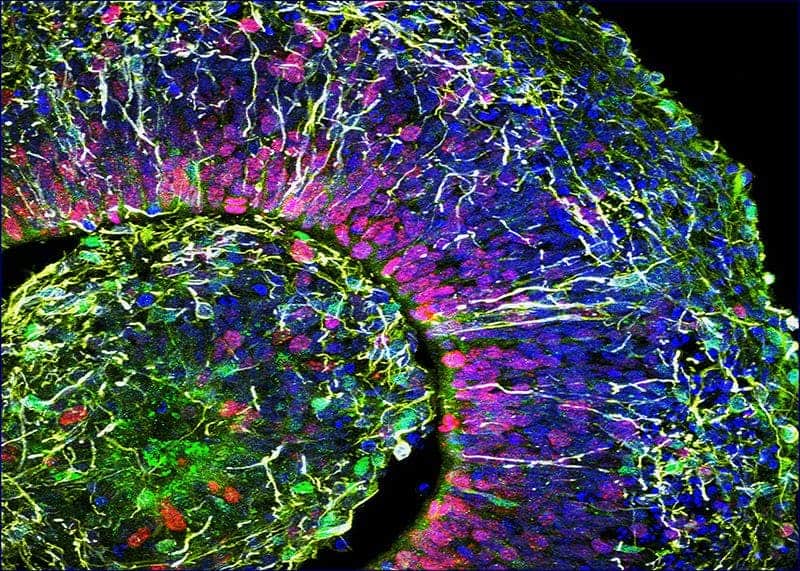
Scientists have been experimenting with growing mini-brains in Petri dishes for some time now. Technically, these are ‘cerebral organoids’ — artificially grown, in vitro, miniature organs resembling the brain — which researchers hope they can use to, for instance, test different drugs and procedures.
These mini-brains, which are no larger than a pea, should not be capable of actual cognition. However, a new study found that the tiny brains grown in the lab were generating advanced brain waves, some of which were very similar to those generated by newborn humans.
Can a mini ‘brain’ in a dish think?
The findings were reported by a team of researchers at the University of California, San Diego, led by biologist Alysson Muotri. For years, they’ve been growing brain organoids from the cells of people with rare neurological disorders in order to test novel therapies on them.
Muotri and colleagues kept their lab-grown organoids alive for years at a time, mimicking the way brain cells would mature inside a human skull. Their special recipe allowed them to grow the organoids for longer than other teams, leading to richer development. And, perhaps, they’ve grown too similar to the real human brain.
Despite their tiny size, the organoids generated several types of complex brain waves, including gamma, alpha, and delta waves — frequencies that are indistinguishable from those of actual animal brains.
“Cerebral organoids can form a variety of brain regions. They exhibit neurons that are functional and capable of electrical excitation. They resemble human cortical development at the gene expression levels,” Muotri said in a statement.
No one has ever reported this level of sophistication in cerebral organoids before, which is why the findings are so exciting.
In the beginning, the mini-brains’ neurons started firing at a single frequency, as in fetal brains. In time, the organoids fired at a rate that indicated they had formed a significant number of functional synapses (neural connections). To measure how similar these recorded brain waves were to human brain waves, the team used an AI trained on brain scans recorded from 39 premature infants born after 24 to 38 weeks of gestation.
The results suggest that the brain waves generated by 9-month-old brain organoids were comparable to those of a nearly full-term baby. Younger organoids had an activity pattern more similar to those of premature newborns. In other words, the researchers wrote in the journal Cell Stem Cell, their lab-grown organoids followed the development of human brains in the womb.
It would be wrong to say that these dish-grown brains are “miniature” baby brains, because there’s a lot more going on in there. Today’s most advanced in vitro brains have two million neurons whereas a full-grown human has 86 billion. These findings raise some huge possibilities, but also ethical concerns. Could someday lab-grown brains become conscious, for instance? Could they feel pain?
That’s a lot of food for thought to chew on. In the meantime, Muotri is hosting a conference in October where he’s invited biologists and philosophers to debate how scientists should approach in vitro brain development.
“What we’ve done is establish a proof-of-principle protocol for a systematic, automated process to generate large numbers of brain organoids,” said Muotri. “The potential uses are vast, including creating large brain organoid repositories and the discovery of causal genetic variants to human neurological conditions associated with several mutations of unknown significance, such as autism spectrum disorder. If we want to understand the variability in human cognition, this is the first step.”






